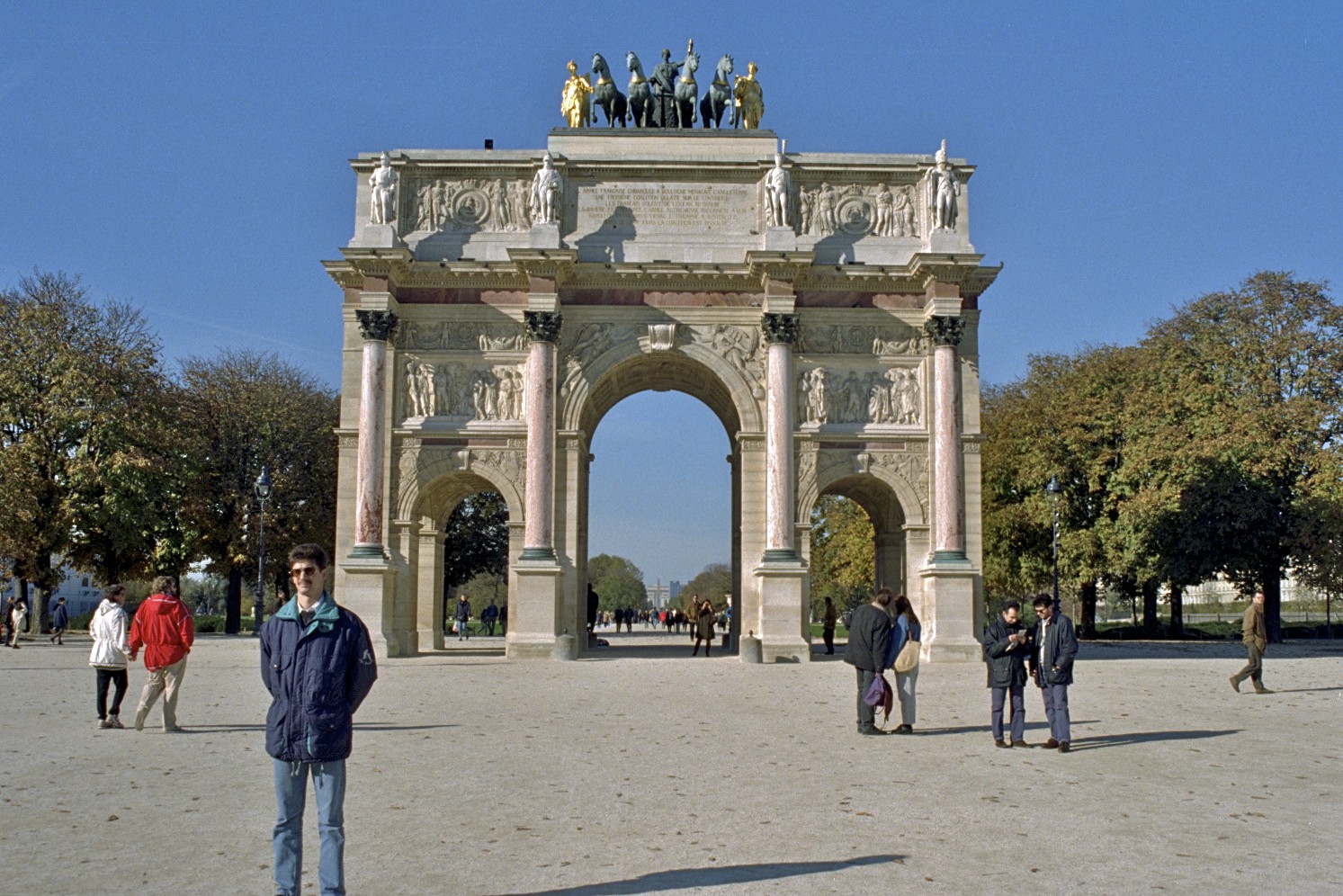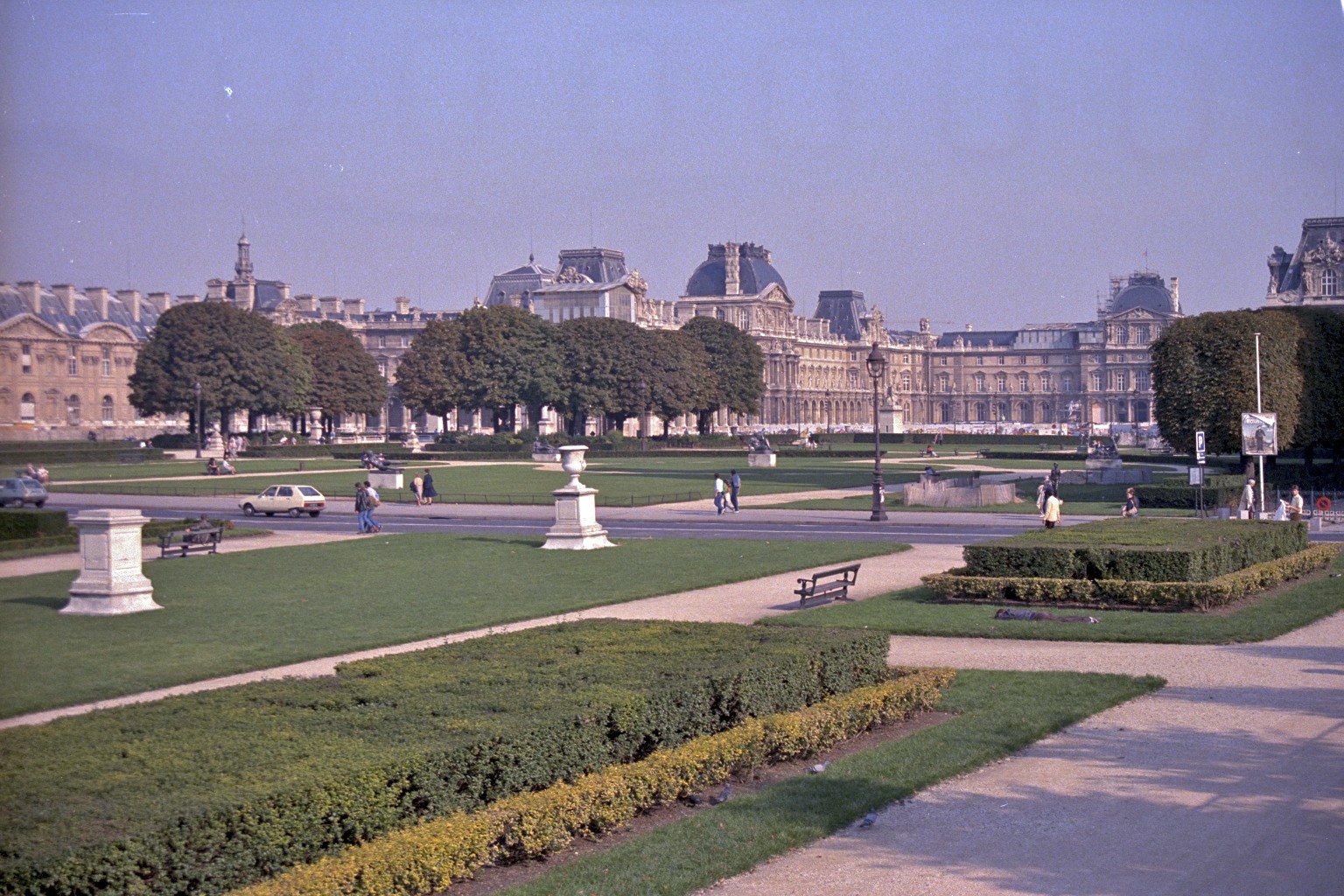Tuileries
We turn into the Jardin des Tuileries.
A typical formal French garden, in opposition to the English style which is free and relaxed. On both sides of Tuileries there are terraces with views, over the Seine from the southern one. The path along the middle of the garden is straight in line with Champs-‘Elysées, only broken by two ponds.
This was once a dumping ground which the renowned landscape architect Le Nôtre designed into a park in 1664, initially as the king’s private park.
A street divides the Tuileries from the garden of the Louvre. Formerly the Tuileries palace was here, built by Catherine dei Medici in the years after 1563. It burnt down in the Communards revolt in 1871.
Arc de Triomphe de Carrousel

Arc de Triomphe de Carrousel
We cross that street, go into the Louvre garden and come to the Arc de Triomphe de Carrousel.
This small arch of victory was built 1806-1809 in memory of the victories of Napoleon. Formerly it was decorated with four horses of bronze which Napoleon stole from the San Marco in Venice, but the Italians have recovered them.
Once, the arch was the entrance to the disappeared Tuileries palace. The garden is full of sculptures by Maillol.
In the western end of the northern wing of Palais de Louvre an independent museum of applied art is located, Musée des Arts Décoratifs.


